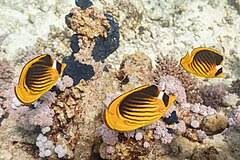
Caring for Pompadour Roses in tropical climates requires special attention to their unique needs. These elegant roses, known for their lush, full blooms and historical significance, can thrive in tropical environments with the right care. This guide covers various aspects of caring for Pompadour Roses in such climates, including planting, watering, fertilizing, pest control, pruning, and environmental considerations.
#### Selecting the Right Location
Choosing the appropriate location is crucial for the success of Pompadour Roses in tropical climates. These roses need plenty of sunlight, ideally receiving at least six hours of direct sunlight each day. However, in tropical regions where the sun can be intense, providing some afternoon shade can protect the roses from scorching.
– **Sunlight:** Ensure the roses receive morning sunlight and are shaded from the harsh afternoon sun.
– **Air Circulation:** Good air circulation helps prevent fungal diseases common in humid tropical climates. Plant the roses in an area with good airflow.
– **Soil:** Pompadour Roses prefer well-draining soil. In tropical climates, sandy loam or amended clay soils with organic matter work well to ensure proper drainage and nutrient retention.
#### Planting
Proper planting is the foundation for healthy Pompadour Roses. In tropical climates, the timing and method of planting can significantly affect their growth and flowering.
– **Timing:** The best time to plant Pompadour Roses in tropical climates is during the cooler months or the beginning of the rainy season. This allows the plants to establish roots before the extreme heat sets in.
– **Hole Preparation:** Dig a hole twice the width of the root ball and slightly deeper. Mix the excavated soil with compost or well-rotted manure to enrich the planting site.
– **Planting Depth:** Place the rose bush in the hole, ensuring that the bud union (the point where the rose bush is grafted onto the rootstock) is slightly above soil level to prevent rot.
#### Watering
Watering is a critical aspect of caring for Pompadour Roses in tropical climates, where high temperatures and humidity can quickly dehydrate plants.
– **Frequency:** Water the roses deeply and regularly. In tropical climates, this often means watering at least twice a week, ensuring the soil is moist but not waterlogged.
– **Method:** Use a soaker hose or drip irrigation system to water the base of the plants, avoiding wetting the foliage, which can lead to fungal diseases.
– **Mulching:** Apply a thick layer of organic mulch around the base of the roses to retain moisture, regulate soil temperature, and reduce weed competition.
#### Fertilizing
Proper fertilization helps Pompadour Roses achieve optimal growth and abundant blooms in tropical climates, where nutrient leaching can be a concern due to frequent rains.
– **Balanced Fertilizer:** Use a balanced fertilizer with an NPK ratio (Nitrogen, Phosphorus, Potassium) such as 10-10-10 or a specific rose fertilizer. Apply according to the manufacturer’s instructions.
– **Frequency:** Fertilize every 4-6 weeks during the growing season. In tropical climates, continuous growth means more frequent feeding.
– **Organic Options:** Incorporate organic matter like compost, fish emulsion, or well-rotted manure to improve soil structure and provide a slow-release source of nutrients.
#### Pest and Disease Management
Tropical climates can be conducive to pests and diseases, so proactive management is essential for healthy Pompadour Roses.
– **Common Pests:** Watch for aphids, spider mites, and thrips. Use insecticidal soap or neem oil to control these pests organically.
– **Fungal Diseases:** High humidity can lead to black spot, powdery mildew, and rust. Ensure good air circulation, water at the base of the plants, and use fungicidal sprays if necessary.
– **Regular Inspection:** Inspect the roses regularly for signs of pests or diseases. Early detection and treatment are key to preventing serious infestations or infections.
#### Pruning
Pruning is essential for maintaining the health, shape, and productivity of Pompadour Roses, especially in a tropical climate where vigorous growth can quickly lead to overcrowding.
– **Timing:** Prune in late winter or early spring before the new growth starts. In tropical climates, this might coincide with the end of the dry season.
– **Technique:** Remove dead, damaged, or diseased wood first. Then, cut back the remaining canes to about one-third of their length, making clean cuts just above outward-facing buds.
– **Thinning:** Thin out the center of the plant to improve air circulation and reduce the risk of fungal diseases.
#### Environmental Considerations
Adapting to the unique environmental conditions of tropical climates is crucial for the successful cultivation of Pompadour Roses.
– **Heat and Humidity:** High temperatures and humidity can stress the roses. Providing afternoon shade and ensuring adequate water supply helps mitigate these effects.
– **Rainy Season:** Heavy rains can lead to root rot if the soil is not well-drained. Ensure proper soil preparation and consider planting on raised beds to improve drainage.
– **Wind:** Strong winds can damage the delicate flowers and stems of Pompadour Roses. Planting in a sheltered location or using windbreaks can protect the plants.
#### Additional Care Tips
– **Staking:** In areas prone to strong winds or heavy rains, staking the rose bushes can provide additional support and prevent damage.
– **Deadheading:** Regularly remove spent blooms to encourage continuous flowering and prevent the plant from diverting energy to seed production.
– **Companion Planting:** Planting companion plants such as marigolds, garlic, or basil can help repel pests naturally and improve the overall health of the rose garden.
#### Conclusion
Caring for Pompadour Roses in tropical climates requires a comprehensive approach that addresses their specific needs. By selecting the right location, ensuring proper planting, and providing adequate water, nutrients, and protection from pests and diseases, gardeners can enjoy the beauty and elegance of these roses even in challenging tropical environments. With the right care and attention, Pompadour Roses can thrive and become a stunning focal point in any garden.
### Advanced Care Techniques for Pompadour Roses in Tropical Climates
#### Soil Management and Enhancement
Maintaining optimal soil conditions is essential for the health and productivity of Pompadour Roses in tropical climates. The high rainfall and temperature variations in these regions can impact soil quality and nutrient availability.
– **Soil Testing:** Regular soil testing helps monitor pH levels and nutrient content. Pompadour Roses thrive in slightly acidic to neutral soil (pH 6.0-7.0). Amend the soil based on test results to correct any imbalances.
– **Organic Matter:** Incorporate organic matter such as compost, aged manure, or leaf mold into the soil. This improves soil structure, enhances water retention, and provides essential nutrients over time.
– **Mulching:** Maintain a thick mulch layer around the base of the plants. Organic mulch, such as straw, bark chips, or cocoa hulls, helps retain moisture, suppress weeds, and regulate soil temperature.
#### Watering Strategies
Effective watering strategies are crucial for Pompadour Roses in tropical climates, where both excessive rainfall and drought can occur.
– **Deep Watering:** Encourage deep root growth by watering thoroughly but less frequently. This helps the plants withstand dry spells and access deeper soil moisture.
– **Water Conservation:** Use drip irrigation systems or soaker hoses to deliver water directly to the root zone, reducing water loss through evaporation and runoff.
– **Rainwater Harvesting:** Utilize rain barrels or other collection systems to capture and store rainwater for use during dry periods. This eco-friendly practice ensures a sustainable water supply.
#### Fertilization Schedule
A well-planned fertilization schedule ensures that Pompadour Roses receive the necessary nutrients for robust growth and abundant blooms.
– **Pre-Planting Fertilization:** Enrich the planting hole with a balanced, slow-release fertilizer or organic amendments to provide initial nutrients for young plants.
– **Regular Feeding:** Apply a balanced rose fertilizer every 4-6 weeks during the growing season. In tropical climates, where growth is continuous, maintaining a consistent nutrient supply is vital.
– **Organic Fertilizers:** Use organic fertilizers such as compost tea, fish emulsion, or seaweed extract to provide a slow-release source of nutrients and improve soil health.
#### Pest and Disease Prevention
Proactive pest and disease management is essential in tropical climates, where conditions can favor the rapid spread of problems.
– **Integrated Pest Management (IPM):** Implement IPM strategies that combine cultural, biological, and chemical controls. Encourage beneficial insects like ladybugs and lacewings that prey on common rose pests.
– **Neem Oil:** Use neem oil as an organic pesticide and fungicide. It helps control a range of pests and diseases without harming beneficial organisms.
– **Sanitation:** Remove and dispose of fallen leaves, spent blooms, and other plant debris regularly to prevent disease buildup and reduce pest habitats.
#### Climate Adaptation Techniques
Adapting to the unique climate challenges of tropical regions can significantly enhance the health and performance of Pompadour Roses.
– **Shade Management:** Provide shade cloth or plant taller companion plants to protect roses from the intense afternoon sun. This reduces heat stress and prevents sunburn on leaves and blooms.
– **Wind Protection:** Use windbreaks such as hedges, fences, or strategic planting to shield roses from damaging winds. This helps prevent broken stems and reduces moisture loss through transpiration.
– **Humidity Control:** In excessively humid areas, improve air circulation around the plants by proper spacing and pruning. This helps reduce the incidence of fungal diseases.
#### Pruning Techniques
Pruning is essential for maintaining the shape, health, and flowering potential of Pompadour Roses, especially in tropical climates with vigorous growth.
– **Timing:** Conduct major pruning at the end of the dry season or the beginning of the rainy season, ensuring the plants are not stressed by extreme weather conditions.
– **Thinning:** Remove weak, spindly growth and thin out the center of the bush to promote air circulation and reduce disease pressure.
– **Deadheading:** Regularly remove spent flowers to encourage new blooms and maintain a tidy appearance. This also prevents the plant from diverting energy into seed production.
#### Seasonal Care
Adjusting care routines to align with the seasonal variations in tropical climates ensures that Pompadour Roses remain healthy and productive year-round.
– **Dry Season Care:** During dry periods, focus on deep watering and mulching to retain soil moisture. Monitor for signs of water stress, such as wilting or yellowing leaves, and adjust watering accordingly.
– **Wet Season Care:** In the rainy season, ensure good drainage to prevent waterlogging and root rot. Monitor for fungal diseases, and apply fungicides as needed to protect the plants.
#### Propagation
Propagating Pompadour Roses allows gardeners to expand their rose collection and share plants with others. Understanding the best methods for propagation in tropical climates can increase success rates.
– **Cuttings:** Take semi-hardwood cuttings from healthy, disease-free plants during the cooler months. Root the cuttings in a well-draining mix of sand and peat, keeping them in a shaded, humid environment until they establish roots.
– **Grafting:** Grafting onto hardy rootstocks can improve the resilience and vigor of Pompadour Roses in tropical climates. This technique is often used to overcome soil-related issues and enhance overall plant health.
#### Container Gardening
For gardeners with limited space or challenging soil conditions, growing Pompadour Roses in containers can be an effective solution.
– **Container Selection:** Choose large, sturdy containers with adequate drainage holes. The container should be at least 18 inches in diameter to accommodate the rose’s root system.
– **Soil Mix:** Use a high-quality potting mix enriched with organic matter and ensure it is well-draining to prevent waterlogging.
– **Watering and Feeding:** Container roses may require more frequent watering and fertilization compared to those planted in the ground, as nutrients and moisture are quickly depleted in confined spaces.
#### Conclusion
Caring for Pompadour Roses in tropical climates involves a multifaceted approach that addresses the unique challenges and opportunities presented by these environments. By focusing on soil management, watering strategies, fertilization, pest and disease prevention, climate adaptation, pruning, seasonal care, propagation, and container gardening, gardeners can ensure their Pompadour Roses thrive and display their full beauty.
Implementing these advanced care techniques not only enhances the health and vitality of Pompadour Roses but also fosters a deeper connection to the art and science of rose gardening. With dedication and attention to detail, gardeners in tropical climates can enjoy the timeless elegance and charm of Pompadour Roses in their own gardens.










